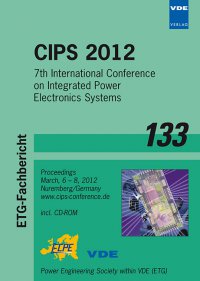Electrical Analysis and Packaging Solutions for High-Current Fast-Switching SiC Components
Konferenz: CIPS 2012 - 7th International Conference on Integrated Power Electronics Systems
06.03.2012 - 08.03.2012 in Nuremberg, Germany
Tagungsband: CIPS 2012
Seiten: 6Sprache: EnglischTyp: PDF
Persönliche VDE-Mitglieder erhalten auf diesen Artikel 10% Rabatt
Autoren:
Mermet-Guyennet, Michel; Fabre, Joseph (ALSTOM Transport - Innovation and Research - Traction Components Engineering, Rue du Docteur Guinier - BP4, 65600 Séméac, France)
Castellazzi, Alberto (UNIVERSITY of NOTTINGHAM - Power Electronics, Machines & Control Group, University Park - NG7 2RD, Nottingham, UK)
Fabre, Joseph; Ladoux, Philippe (UNIVERSITE de TOULOUSE - Laboratoire Plasma et Conversion d’Energie, 2 Rue Charles Camichel BP7122, 31071 Toulouse Cedex 7, France)
Inhalt:
Silicon Carbide (SiC) technology will push the limits of existing silicon components in the three directions: higher blocking voltage, higher operating temperature and higher switching speed. The last feature, in particular, allows multiplying by a factor 20 the switching frequency, as compared to equivalent silicon IGBT components, but with the constraint of a large increase in di/dt and dv/dt. At turn-off, dv/dt is easily controlled by the driver, but di/dt is mainly intrinsic to the transistor and diode technology. In addition, paralleling elementary SiC devices will increase drastically the di/dt and, for a nominal current value of 1000 A, the di/dt will be in the range of 20 to 50 kA/mus. The switching behaviour of SiC devices (MOSFET and JFET) must be well understood at turn-off and turn-on, including the influence of the free-wheeling SiC diode internal capacitance which is much higher than the equivalent for Si devices. Then, the behaviour of these elementary devices in their environment with parasitic R,L,C is presented with induced oscillations and over-voltages. This analysis will produce design guide-lines for SiC device packaging and global inverter design.


